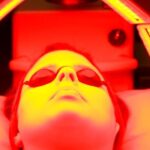Healthcare diagnostic tools are significant assets in healthcare technology as they assist healthcare professionals in identifying medical conditions that are afflicting patients. These devices also assist in simplifying the methods of diagnosis, cutting time and the overall cost of research involved before arriving at an accurate diagnosis, and enhancing funding for improved health care.
1. Enhanced Accuracy and Efficiency
Medical diagnostic testing equipment is generally used to diagnose one or many diseases and should therefore provide accurate and reliable results. For instance, the TM Flow System is a new diagnostic product with a unique technology that aims to measure the flow of body fluids, including blood and urine. The system assists healthcare professionals in diagnosing some diseases, including kidney disease, diabetes, and liver disease, among others, in a more efficient way.
Additionally, it supports the identification and management of conditions requiring specialized care, such as parotid tumor treatment, ensuring patients receive timely and accurate interventions. Utilizing Electronic Health Records (EHR) can also enhance diagnostic accuracy and streamline processes. Such systems, like those provided by Foothold Tech, support care coordination and improve patient outcomes through efficient data management in mental health services.
2. Streamlined Diagnostic Process
The tools from the clinical stage can be of great assistance in the case of research, as they can help cut costs and time required for the processes. For example, computer-based testing tools can perform several tests at once, which eliminates the need for testing to be done manually, minimizing instances of human-made mistakes. Currently, a simplification of the health information technology system can contribute to decreasing healthcare delivery administrative consequences and increasing the quality of patients’ care.
3. Improved Patient Outcomes
Medical diagnostic testing equipment can be useful in enhancing patient outcomes by enabling the accurate diagnosis and treatment of specific medical conditions. For example, the TM Flow Test is a non-invasive diagnostic technique that can be used to diagnose cancer disease, kidney diseases, and other diseases at an early stage, effectively increasing the chances of the patient getting the right treatment. Healthcare providers must embrace modern diagnostic tools to manage complications and enhance patient satisfaction.
4. Enhanced Patient Experience
Medical diagnostic testing equipment can also impact the patient’s experience and make diagnostic testing more comfortable and convenient. For instance, non-invasive diagnostic techniques such as the TM Flow Test can help avert the use of invasive processes, that cause patients discomfort and stress. Furthermore, such systems may enhance the effectiveness of diagnoses and patients’ overall health since the result may be more accurate and the patient gets a diagnosis in the shortest time possible.
5. Advancements in Research and Development
The imaging equipment used in diagnosis or tests also helps advance research and development activities in the medical field and keeps providers at the cutting edge technologically. For example, the TM Flow System has been applied in numerous research investigations to enhance knowledge concerning kidney diseases and other related disorders. Consequently, using modern diagnostic methods for the detection of new biomarkers and the continuous improvement of treatments is only possible when research personnel have access to tools that allow them to do this.
6. Universal ECG: Enhancing Cardiac Diagnostics
The Universal ECG is a slimline, 12-lead ECG with built-in electrodes, designed for connection to a standard PC or laptop. High-resolution ECG data can be acquired, stored, and analyzed with the help of the implant, which makes it a useful tool for identifying pathological changes in the heart. That way, the Universal ECG integrated into the EHR would help healthcare providers diagnose the patient’s arrhythmia, myocardial infarction, or another cardiac condition as soon as possible and increase the patient’s clinical success rate while decreasing the probability of adverse effects.
7. Cost Savings
Medical diagnostic testing equipment can help reduce healthcare costs by reducing the need for unnecessary testing and procedures. For example, automated testing systems can identify abnormal test results quickly, allowing healthcare providers to take prompt action and avoid unnecessary procedures. Additionally, these systems can help reduce the cost of testing by minimizing the need for manual testing and reducing the risk of errors. By reducing healthcare costs, medical diagnostic testing equipment can help improve access to care for more patients.
Conclusion
Healthcare professionals use medical diagnostic testing equipment, which is crucial in the field of medicine, to diagnose various medical conditions. Such innovative solutions as the TM Flow System, TM Flow Test, and the Universal ECG will allow for optimizing patient results, minimizing expenses, and disseminating patients’ satisfaction. It is important to continue advancing medical technologies to ensure that potential diagnostic tests have an impact on overall healthcare for the global population.
Read more:











